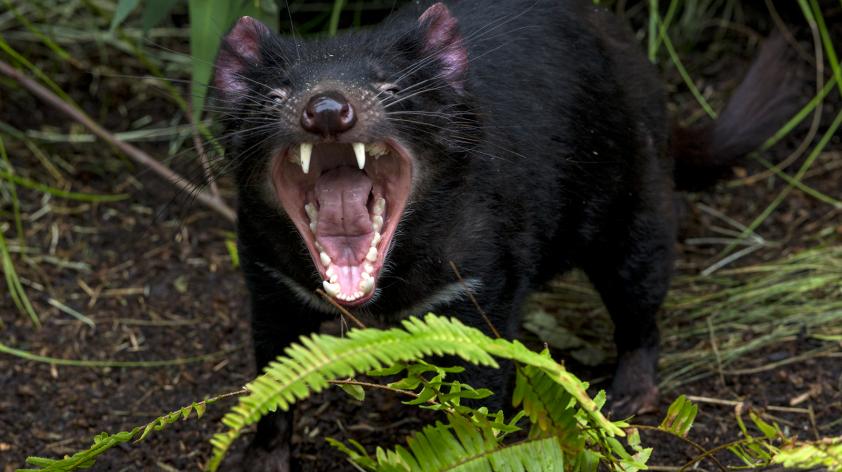
Computer Science meets Conservation Science: Reflections of an Intern
What is a computer science major doing as an intern for the San Diego Zoo Institute for Conservation Research? This is a question that even I asked myself before I started; specifically, how could I make an impact in a field that seems so different from my own? Of course, I had no idea what I was in for, nor that my experience would be one of the most influential factors in shaping my future career.
As with any project in computer science, there always must be a problem, and this problem is a formidable one.
Currently, wild Tasmanian devils are suffering from a transmissible facial tumor that inhibits the devil's ability to eat, inevitably leading to the animal’s death, and causing massive population declines (for more details on this disease see: http://institute.sandiegozoo.org/science-blog/devil%E2%80%99s-contagious-cancer). While there are possible solutions—such as the reintroduction of healthy, vaccinated Tasmanian devils—it is imperative that scientists do their very best to understand the value and possible implications of these solutions before implementing them.
This is where a computer simulated model, i.e., my project, can help. With computer models, the goal is to simulate the conditions occurring naturally, so that the effects of different solutions can be evaluated. Essentially, the model is constructed by creating a single, customizable, digital template for a Tasmanian devil; then, many devils are created using this template and are placed into a virtual environment to observe how they interact. While a simulation can never capture all the complexity of the real world, it can be a small, but still useful, part of finding a solution.
I worked on the model for months: researching animal and disease biology and discussing the key drivers of the disease process with the project’s epidemiologists. Eventually, the simulated Tasmanian devil population began to mirror what has been observed in the wild, rapidly declining to the point where only few remained in the face of the disease. Though we anticipated the model behaving in this way, there is still something deeply disheartening about watching even a virtual population drop to extinction before your eyes.
The good news is that that through this endeavor comes the hope that by better understanding devil decline, we can help to stop it and begin to test the effectiveness of different recovery strategies. As mentioned before, one possibility is through reintroduction; when tested in the model (as depicted in the image), the vaccinated Tasmanian devils do have a positive effect on the population, holding off the disease for some time.
I learned a lot from this project, both about the importance of conservation and about the power of applying core computer science concepts to seemingly unconnected fields. As of writing this, I am in my final year at UC Berkeley and have just accepted a full-time position at Google. While it may have always been my goal to end up at a top-tier tech company, never in my wildest dreams did I imagine this would be the route I took to get here. Moreover, I truly believe that I never would have gotten to where I am now without experiences like working with the San Diego Zoo.
Computer science is a field that is often wrapped up in trying to solve new problems and make consumers lives easier; it seems too easy to overlook the often-forgotten parts of our world that need our attention most, such as the declining Tasmanian devils. Whenever I speak about the Tasmanian devil project to my friends and colleagues in the tech world, I get looks that can best be described as “confused curiosity”—trying to understand how it has never occurred to them how greatly computer science can impact a field so seemingly different from their own.













